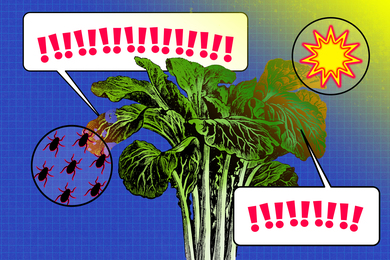An MIT faculty member whose three-year-old invention has had a significant impact on wireless communications is the 2001 recipient of the National Science Foundation's highest honor for young researchers.
Associate Professor Vahid Tarokh of the Department of Electrical Engineering and Computer Science (EECS) has won the Alan T. Waterman Prize. Professor Tarokh, 34, received the prize for transmission schemes known as space-time codes that significantly improve both the performance and data rates of wireless communication.
Space-time codes have already been incorporated into international standards for the lastest cell phones, personal digital assistants and other wireless devices. By some estimates, more than one billion handsets might be employing space-time codes within five years.
Professor Tarokh is the second MIT researcher to win the Waterman Prize, which includes a research grant of $500,000 over three years and a medal. Chemistry Professor Christopher C. (Kit) Cummins won in 1998. Professor Tarokh will accept the award at a May 23 dinner at the Department of State in Washington, DC.
Professor Tarokh learned of his selection via a phone call from Dr. Rita R. Colwell, director of NSF. "I must say that I have had really good and bad days in my life, and that day was one of the very good ones," he said.
"Vahid is an extraordinary young researcher," said Professor John Guttag, head of EECS. "He combines formidable mathematical skills with an engineer's intuition about which problems are most important to address. We are indeed fortunate to have him as a member of the EECS faculty."
According to Richard Bla- hut, a professor of electrical and computer engineering at the University of Illinois and a member of the National Academy of Engineering, Professor Tarokh "is the most promising scientist that I know at this point in his career. His work up until now has been stunning, and he is capable of making far-reaching contributions to technology."
"Dr. Tarokh is richly deserving of the Waterman Award," said Ruzena Bajcsy, NSF assistant director for computer and information science and engineering. "As a computer scientist and engineer myself, I would like to add that his colleagues are especially proud on his behalf, for the recognition this award brings to the importance of basic research in information theory and technology."
SPACE-TIME CODES
Everyone has experienced the frustration of wireless communications that are of poor quality. One example is the interruption of a cell phone call placed from a moving car or other environment that's not optimal for transmission.
According to Professor Tarokh, this happens because "the transmitted radio waves are reflected by objects in the environment. The reflected versions of the signals travel different distances when they arrive at the receiver. As a result, these reflections can cancel each other.
"If your receiver sits at the point of space where the reflections cancel each other, it's extremely difficult for the receiver to determine the transmitted signal."
The phenomenon, he said, is analogous to what can happen to waves in a swimming pool. "Imagine that you are constantly hitting the surface of the water with your two thumbs. The waves that the two thumbs are generating add destructively at some parts of the swimming pool, and you can observe that the water is not moving at these points." This is akin to what happens when scattered versions of the radio waves cancel each other.
One way to solve this problem is to send a replica of the transmitted signal in another format to the receiver. For example, the signal can be sent at another time or in another frequency. But that isn't very efficient, Professor Tarokh said.
Another approach is to deploy a plurality of antennas at the transmitter or receiver. If two receiver antennas, say, are far apart and one is not receiving a good signal, the other may still get a good signal. "So combining the signals from multiple receiver antennas improves the performance," Professor Tarokh said. However, it would be hard to put numerous receiver antennas on most handheld devices, as the size of devices are small and getting even smaller.
In contrast, multiple transmit antennas at the base station are easier to deploy, Professor Tarokh said. Also, the cost of multiple transmitters can get amortized amongst many users.
"That's what motivated me to consider transmission using multiple transmit antennas," he said. "It can be shown that this approach can also significantly increase data rates of wireless systems.
However, designing transmission schemes for this multiple-antenna approach is quite difficult. Professor Tarokh's space-time codes solve the problem.
"In designing these codes, I constructed a new [mathematical] theory," he said. "In some cases, I had to improve significantly on the arcane works of the great mathematicians Radon and Hurwitz." He also had to invent a way to combine space-time coding with existing signal processing techniques.
Space-time codes were quickly accepted by the industry. In addition to their adaptation by a variety of standards' bodies, most wireless-communications and information-theory conferences now have multiple sessions on space-time codes.
"Given all these activities," said Professor Tarokh, "I forecast a day when space-time codes will be used to push very high rate wireless data to laptops and other handheld devices."
Professor Tarokh, who came to MIT in September 2000, received the PhD from the University of Waterloo in 1995. After a year at the University of Illinois at Urbana-Champaign, he joined AT&T Labs. He first became interested in wireless communications when his supervisor, Dr. A. Rob Calderbank, sent him to work with AT&T Wireless in Seattle. "Rob is in the level of classical mathematicians including the great Claude Shannon himself," Professor Tarokh said. MIT Professor Emeritus Shannon, known as the father of modern digital communications, died earlier this year.
A version of this article appeared in MIT Tech Talk on May 9, 2001.






